One of the most popularly visited forested areas in Sarawak, Malaysia is Lambir Hills National Park. Located around 30+ kilometres away from Miri, it is really easy to get to for both tourists as well as locals. The trekking routes, green forested trails and the abundance of easily accessible waterfalls are all reasons why the park sees a lot of visitors every weekend.
While most people head to the park from Miri, we decided to make the trip all the way from Brunei which meant crossing the border between Miri and Brunei. Since we had done it before, this time was a breeze. Anyway, let’s talk about Lambir Hills National Park, what we did and why we should have done stuff a wee bit differently.
This post may contain affiliate links. As an Amazon Associate, I earn a small commission from qualifying purchases at no additional cost to you. Read my disclaimer for further information.
Table of Contents
Location, Entrance Fees And Timings To Lambir Hills
As I mentioned before, Lambir Hills National park is just a short drive away from Miri. Getting there is pretty straight forward and unlike Niah National park it has just one entrance. The park itself has a large parking area, a camping ground and its own accommodation which is pretty reasonable.
We however were there on a day trip or we would probably have chosen to try one of the cabins that they offered.
The entrance fees to the park are as follows:
Adult: 10 MYR per person (Malaysian) or 20 MYR per person (Non Malaysian)
Senior Citizen: 5 MYR
Disable: 5 MYR
Student: (6 to 18 years): 3 MYR
Children below 6: Free
You are provided with a map and guidance when you reach. We reached at around 9:30-10 am so the longer more arduous trail up the hills was out of the question. At 25 weeks pregnant I was rather relieved but we still embarked on an ambitious route which I will talk about in a bit.
Another thing that you should keep in mind is the timings of the park. The park is operational every day from Monday to Sunday. Each of the offices however have different timings.
Administrative office: 8 am – 5 pm
Registration office: 8 am – 3 pm
Outdoor activities: 8 am – 4 pm
Safety Instructions And Warnings Before Heading Into To Lambir Hills
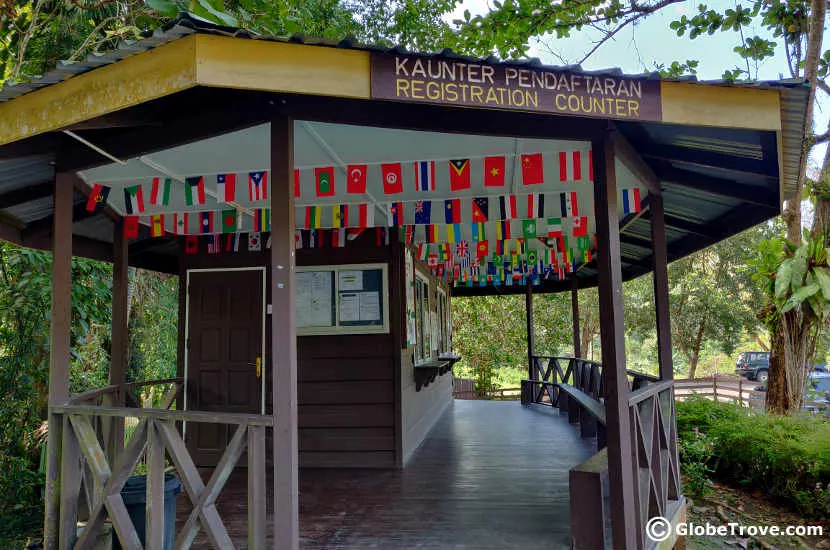
The Lambir Hills National Park registration counter
One of the things that I really liked about Lambir Hills National park was that it was very organized and the safety of the people entering the park was taken into consideration at every step of the way.
It made such a contrast when I compared it to the other treks that we had undertaken in different parts of south east Asia. That being said, a lot of the safety instructions are on the notice boards so stop a few minutes to read them. I will however summarize as much as I can.
Lambir Hills National Park Rules
The rules and regulations of Lambir Hills National Park are pretty straight forward and are similar to all parks across the world.
- Do not remove any object living or non-living from the park.
- No weapons or explosives are allowed in the park.
- Do not write on tree trunks, plank walks, buildings and rocks.
- Do not cut vegetation or set fire to anything in the park.
- No littering inside the park.
- Do not enter the National Park without permission.
PENALTY: A fine of 10,000 MYR plus one year jail will be imposed for committing any of the above offences.
Safety Awareness
One of the things that was brought to our attention was the need to register the path that we were taking with the ranger on duty. This meant that the park was aware that you were in the forest and which area you planned on trekking so that in case things took a hairy turn, they knew where to find you.
Note that you have to also inform the Ranger when you make it out of the park after your trek so he can tick your name of the list as safe.
The Ranger of duty will provide you with a map and give you advice on the trail best suited for you depending on the time that you reach the park. One thing that the Ranger emphasized on was the need to have adequate water when on the trail. With the heat in Borneo, I can’t say that he was far from wrong because dehydration is a major threat.
Don’t forget to take a photograph or note down the emergency contact numbers that are listed on the notice board before you leave.
Things To Carry When On The Trail
Being prepared is very important on every trek. Trekking through the forests in Borneo may be a bit different from other parts of the world because of the critters you encounter and the weather. Here are a couple of things that I think you really should carry when you head out.
Water: Do not start trekking without making sure that you have enough water. Even if you find yourself trekking during one of the cloudier or cooler days, you will find yourself thirst and dehydration is a major risk. A lot of people have mentioned that carrying a LifeStraw is a good idea. I haven’t gotten down to getting myself one yet though.
Rainwear: We forgot to take our rainwear when we headed out on the trek and weren’t too worried because the weather forecast was clear skies. Ha! Somewhere midway through our trek, the skies opened and we found ourselves stuck in a classic tropical rain storm. Don’t be us! Carry your rainwear!
Mosquito Repellent: Carrying Mosquito or bug repellent will be a lifesaver. I don’t know how much we used of ours but we found ourselves spraying and spraying ourselves to keep them away.
Remember to top it up especially if you get wet in the rain or take a dip in the waterfall. It apparently works for leeches too. Oh yes… There are those critters to deal with as well!
Wear good shoes: The kind of footwear that you use is also very important. While the trek did look simple enough while the ground was dry, things changed rather fast after the rains.
The ground turned slushy and slippery and I have to admit that we were rather glad we wore our trekking shoes for more than one reason. (Read… They helped keep the leeches out!!)
Socks: I would suggest ensuring that you wear socks and that the legs of your trousers are tucked into them. This is because of the leeches in the forest. If it rains and the ground is wet, expect them to start crawling on you.
We survived without a bite only because we were prudent enough to think ahead. We still had to pluck them off our socks, trousers and shoes though which wasn’t pleasant.
Towel and swimwear (optional): One of the popular stops is at the waterfall. A small pool forms at the base and it makes for a really nice refreshing dip. Carrying a microfiber towel may be a great idea if you plan to get wet. There are toilets in the vicinity that you can use to change.
A light snack: We always carry a light snack when trekking. This could be anything from an orange to a packet of biscuits. It becomes a lifesaver is the trek is longer than you expect or if you lose your way.
The Different Trails In Lambir Hills National Park
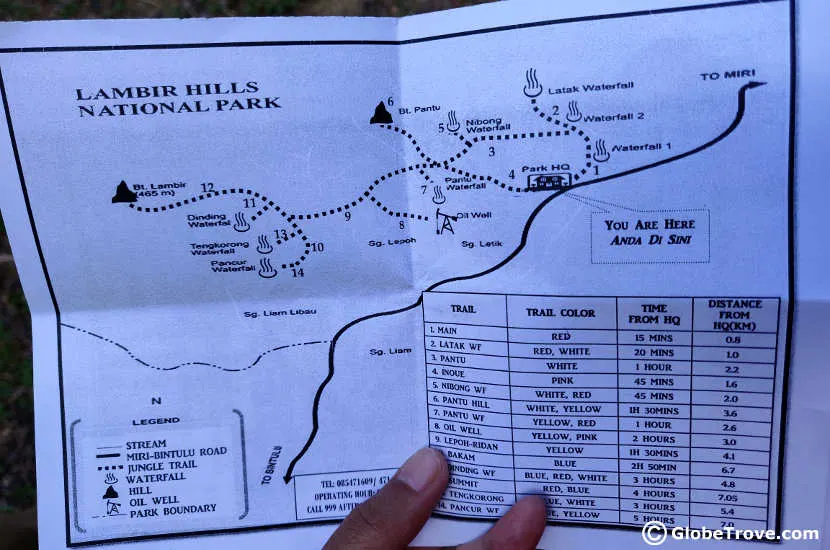
Lambir Hills National Park map that was handed to us.
You will be surprised to learn that there are a number of sights scattered throughout Lambir Hills National Park. Waterfalls can be seen on most of the trekking paths that you take. The difficulty index of each of the paths is different.
One very important factor to take into consideration when heading out on a trek is your capabilities. Do not measure the difficulty of the trek just by the distance. Some of the trails take longer because of the inclines that you climb up and down.
Another point to consider is how much energy you have to make the journey back.
First Trail: Lalak Waterfall
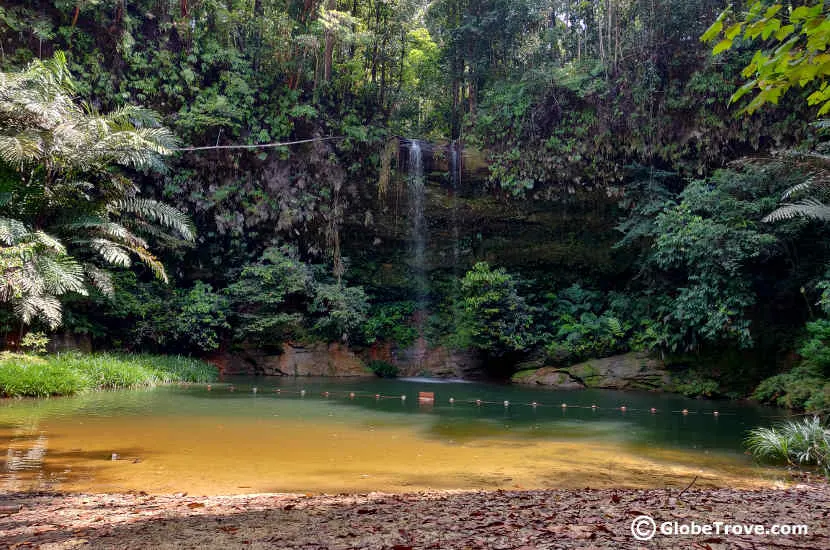
Lalak waterfall has a gorgeous pool that you can take a dip in.
The Lalak waterfall is the largest waterfall in the park and the route to it is the most popularly used trek. It is also the easiest trek in my opinion. On the way, you will pass by two smaller waterfalls which you can stop at. You however cannot swim in the pools created by these waterfalls.
The pool at the Lalak waterfall however is much larger. There is a clearing with a sitting area for people to relax and even restrooms for those who need it. That means you can change if you get wet in the water.
Speaking of water. The water here is clean and cool. Perfect for a dip if you are up for it. Just remember that there is no lifeguard on duty.
The Second Trail
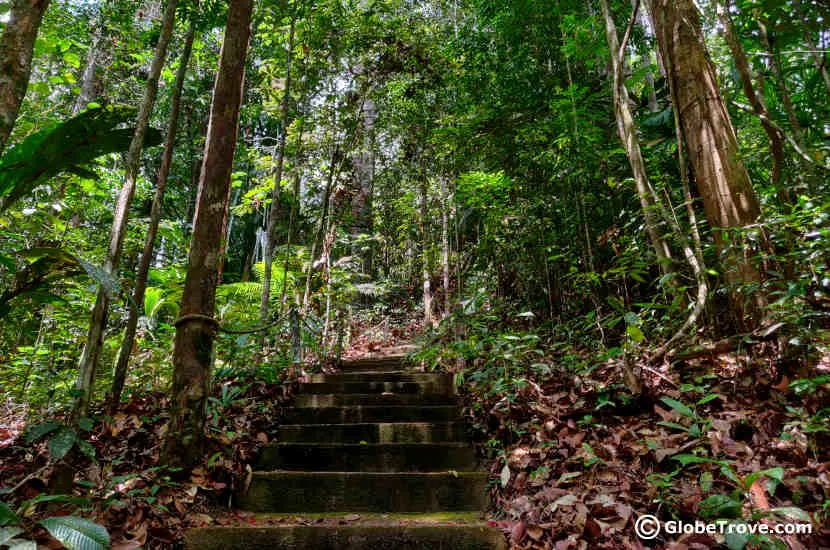
The second part of our trail.
The second trail was what the park ranger suggested that we take. It included walking to Lalak waterfall and then heading on to Nibong waterfall and Pantu waterfall before heading back to the Park headquarters.
The first part of the second trail was a huge climb up. We did not mind. In fact, what we did not realize was that this was the harder trail when compared to the previous half that we had completed.
That being said, things weren’t too bad until the skies opened up and it began rain and thunder. The ground quickly got mushy, we got drenched and the going got harder.
Being pregnant meant that I had to go both cautiously and slowly. We saw no other trekkers on this route which was another thing that concerned us. The path itself however was pretty. It wasn’t paved but the rainforest surrounded us on either side.
Unfortunately once the ground got wet, the leeches and the mosquitoes came out with a vengeance.
Third Trail: Bt. Pantu
We noticed this trail marked on the map but we did not attempt it largely because by the time we reached close to the beginning of the trail, we were exhausted. I guess you could say, it was meant for people who reached earlier and had more stamina than I did.
The Longer Trails
There are a couple of longer trails that you can embark upon. They take you to Bt. Lambir, Dinding waterfall, Tengkorong waterfall and Pancur waterfall. These treks take much longer, and you need to reach the park early if you want to embark on them.
When I marked Lambir Hills National Park on the map as a place I wanted to visit, I was under the impression that the trails were easy. What I did no realize is that the trails have different levels of difficulty. It is something that I really want to lay emphasis on.
The Lambir Hills National park is beautiful and is definitely worth a visit. It can be enjoyed because you can pick a trail that suits you specifically.
Have you been to Lambir Hills National Park in Sarawak? Which trail did you embark on? Let us know in the comments below.
*This post contains Affiliate links

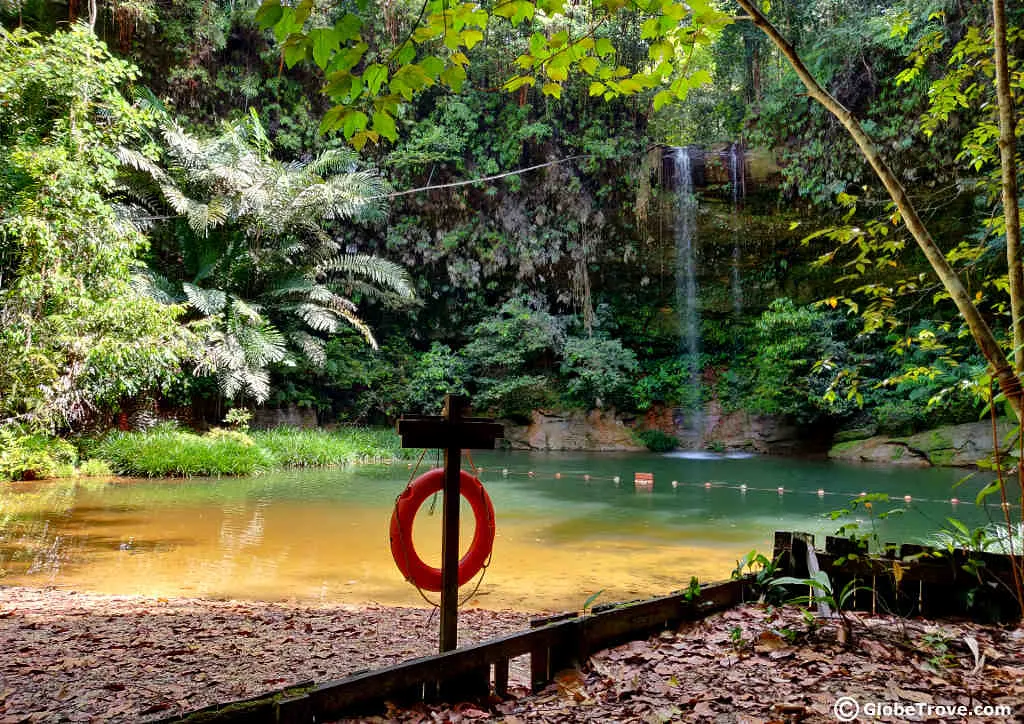
Teja
Sunday 19th of May 2019
Wow, I'm impressed! There's even difficulty ratings for the trails - I've never seen that in this region before!
Penny
Sunday 19th of May 2019
I'm not sure whether it is an actual written difficulty scale but the park rangers here are pretty awesome. They give you advice based on what you want and what you can achieve.